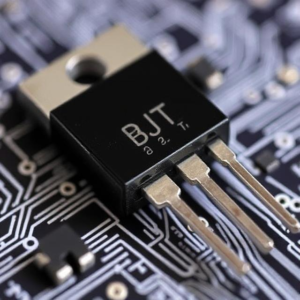Transistors are essential components in electronics, used for amplifying signals or acting as switches. There are different types of transistors, each with its unique properties and uses. Let’s break them down in a simple way:

Bipolar Junction Transistor (BJT):
Types:
NPN (Negative-Positive-Negative) and PNP (Positive-Negative-Positive)
How It Works:
In NPN, when a small current flows into the Base, it allows a larger current to flow from the Collector to the Emitter.
In PNP, the current flows the opposite way, and a small current at the Base allows current to flow from the Emitter to the Collector.
Uses:
Amplification: BJTs are great for amplifying weak signals (like in audio systems).
Switching: They are also used to switch devices on or off in digital circuits.
Field-Effect Transistor (FET):
A Field-Effect Transistor (FET) controls the flow of current using an electric field (hence the name). FETs have three main parts: Source, Gate, and Drain.
Types of FETs:
Junction FET (JFET): Uses the gate to control current flow between the source and drain.
Metal-Oxide-Semiconductor FET (MOSFET): Similar to JFETs but with an insulated gate that doesn’t allow current to flow directly into the gate, making it more efficient.
How It Works:
In a JFET, the gate creates an electric field that controls the flow of current between the source and drain.
In a MOSFET, the gate controls current by creating an electric field but has an insulated layer, meaning it doesn’t need current to flow into the gate.
Uses:
JFETs: Used in high-impedance circuits (like sensors and amplifiers).
MOSFETs: Most commonly used in digital circuits (like in computers and microchips), switching applications, and amplifiers because they are fast and efficient.
Insulated Gate Bipolar Transistor (IGBT) :
The IGBT combines the characteristics of MOSFETs (voltage control) and BJTs (current control). It’s widely used in power electronics.
How It Works: The IGBT has an insulated gate like a MOSFET, but it can handle high voltages and high currents, like a BJT.
Uses: Power control: Commonly used in applications like electric trains, motor drives, and power inverters (e.g., solar panels).
Phototransistor :
A phototransistor is a type of transistor that reacts to light instead of electrical current. It’s similar to a BJT but uses light to trigger the current.
How It Works:
Light hitting the Base generates charge carriers (electrons) and allows current to flow between the Collector and Emitter.
Uses: Optical sensors: Used in light-sensitive applications like remote controls, photoelectric sensors, and solar panels.
Tags: active mode, amplification factor, Amplifier, analog electronics, analog signal, Analog-to-digital conversion, audio amplifier, Audio Systems, base, base current, base region, base-emitter junction, biasing, Bipolar Junction Transistor, BJT, BJT transistor, circuit, circuit design, CMOS technology, collector, collector current, collector region, collector-emitter current, Computers, computing devices, current amplification, current amplifier, current control, current flow, Current Gain, current regulator, cutoff mode, depletion region, digital electronics, digital signal, discrete component, doping, drain, electrical signal, electrical switch, electronic component, Electronic Components, electronic switch, Electronics, electronics engineering, emitter, emitter current, emitter region, FET, FET transistor, Field-Effect Transistor, Gain, gate, germanium transistor, hearing aids, high-frequency circuit, IC, IC design, IC transistor, input current, input signal, Integrated Circuit, junction transistor, laptop, linear amplification, load resistor, logic circuits, Logic Gates, majority carriers, Microcontroller, Microprocessor, miniaturization, miniaturized electronics, minority carriers, mobile phones, MOSFET, N-type material, NPN transistor, NPN type, off state, on state, output current, Output Signal, P-type material, planar transistor, PN junction, PNP transistor, PNP type, power control., Power Electronics, radio, RF amplifier, saturation mode, semiconductor, semiconductor device, semiconductor junction, sensor interface, Signal amplification, Signal Boost, signal booster, Signal Control, signal modulation, signal processing.transistor, signal switching, silicon transistor, smartphone, sound amplification, source, strong signal, surface-mount transistor, switch, switching circuit, switching device, switching speed, tablet, thermal stability, threshold voltage, TO-220 package, TO-92 package, transistor, transistor action, transistor array, transistor layers, transistor logic, transistor operation, transistor package, transistor symbol, transistor terminals, transistor-based amplifier, transistor-based switch, VLSI, Voltage Amplification, voltage control, weak signal, wearable tech


